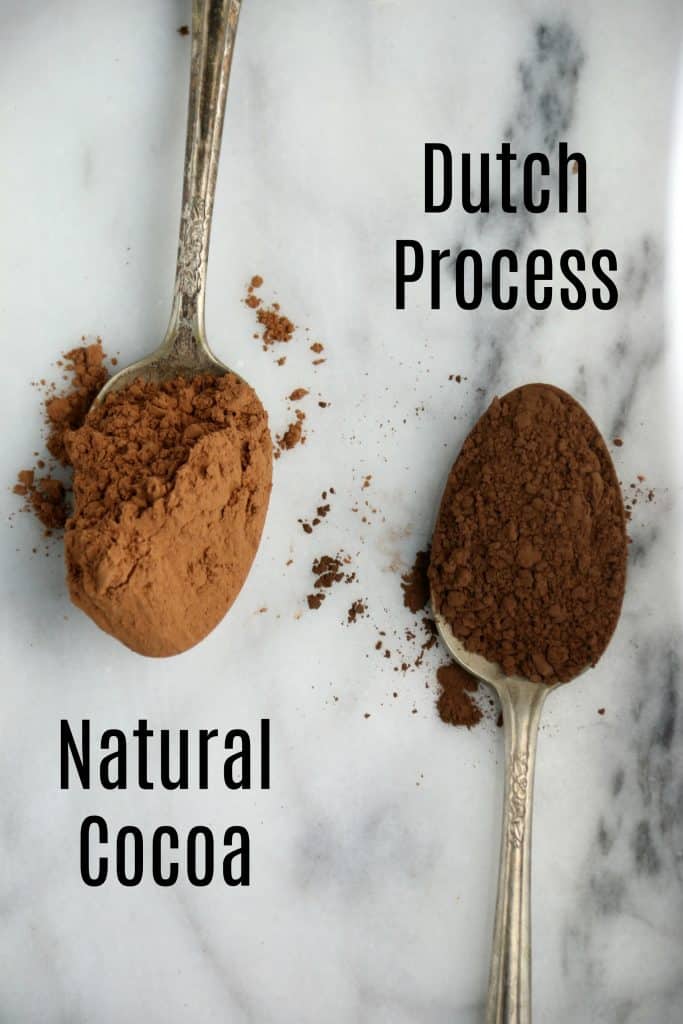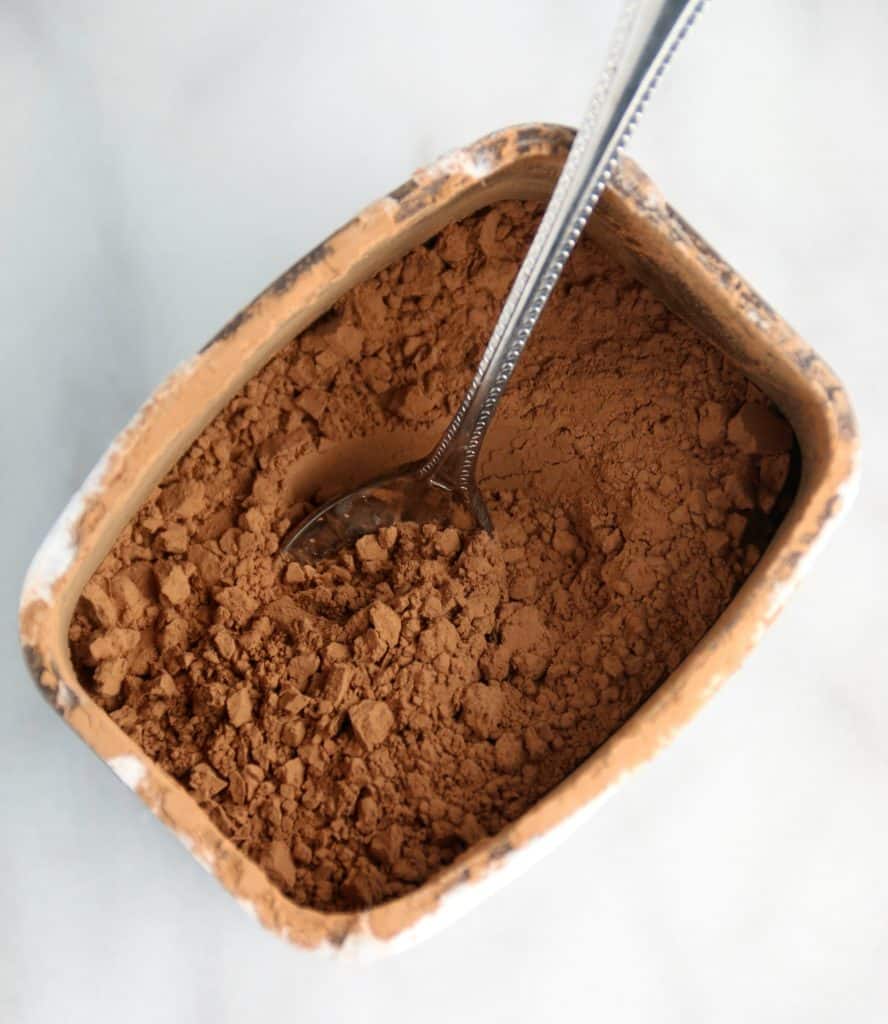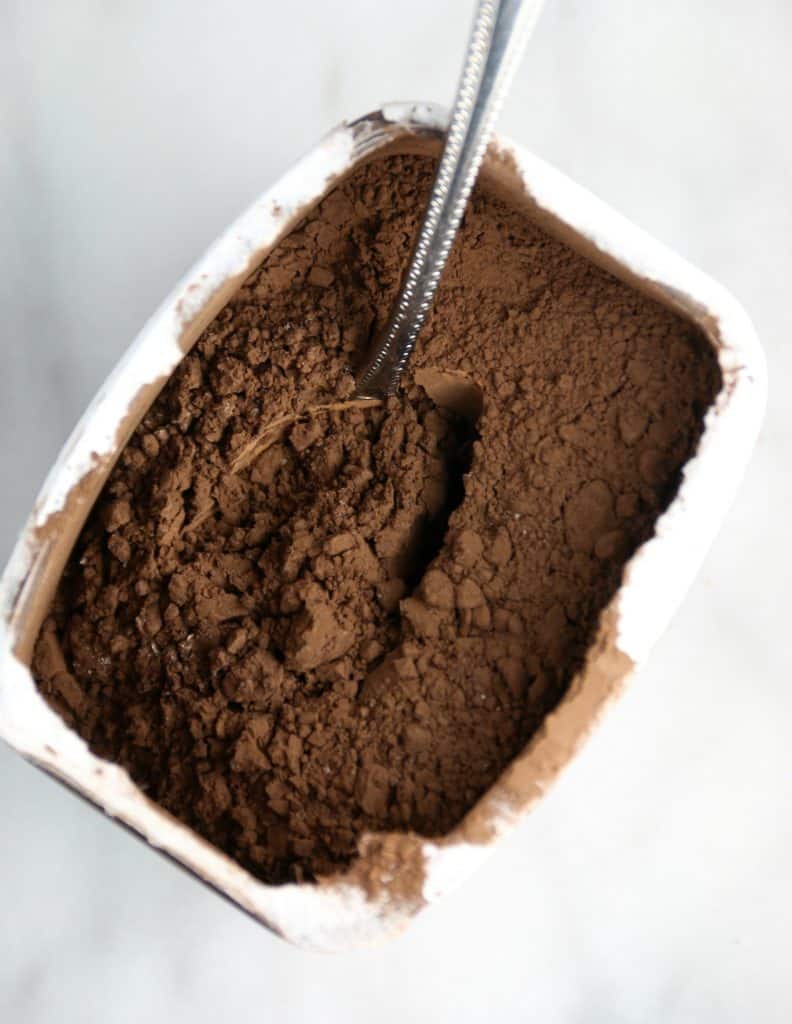This Post May Contain Affiliate Links. Please Read Our Disclosure Policy.
Let’s finally figure out Natural Cocoa vs Dutch Process. In this baking science post, you will learn the differences and how to bake with each of them so you can have success when baking with cocoa every time!
This post contains affiliate links. You can read my full disclosure policy here.
When it came to school, I loved math and science.
Yes #nerd all the way. So it’s probably no wonder that I love geeking out over the science of baking. I feel like cooking is an art form. A brush stroke here. A pinch of this there. My sister is the artist in the family. She loves to cook. I’m the scientist. Give me me my kitchen scale, mixing bowls, and spatula and let me whip you up a chocolate cake anyday.
And when it comes to baking, you have to know the science behind some of the common ingredients. Otherwise you go from “Wow you made that?!” to hide in shame and throw it in the trash. Like your cocoa powders for instance: Natural cocoa vs Dutch Process Cocoa Powder.
All cocoa powders are created equally right? Um, no. Sorry. They aren’t So let’s geek out a little today and finally break down the difference between natural cocoa powder and dutch processed cocoa powder once and for all.
What is cocoa powder?
Lets start with just what the heck is cocoa powder. Cocoa powder is the essence really of chocolate. It’s what remains after the cacao beans after they have been fermented, dried and roasted. The beans will be cracked into nibs, then ground into a paste. From that you will get cocoa butter and cocoa solids. It is those solids that are left behind that are ground into what we known and love as cocoa powder. (seriouseats.com)
Of course, cocoa powder is nothing you want to eat on its own. With no sugar, fat, or milk added to it cocoa powder will be quite bitter. So don’t go grabbing a spoonful of it quite yet.
Ok so let’s break down natural cocoa vs dutch process…
Natural Cocoa Powder
Natural cocoa powder is exactly what was described above. Usually a medium brown in color and acidic to the taste. It’s that natural powder left behind. Very acidic with a pH ranging from around a 5 to 6. If you can’t remember back to chemistry class in highschool, water has a pH of 7 – right in the middle and anything lower than 7, like your cocoa powder is an acid.
Not all natural cocoa powders are created equal and will have varying flavors but all will be acidic in nature. Common brands that you can find your grocery store are Hershey’s, Ghirardelli, Scharffen-berger (some do, some don’t), and possibly a generic store brand. I try to stick with a quality brand (at least a name brand) as oppossed to those generic brands.
Dutch Cocoa Powder
No the Dutch don’t make this. And according to Serious Eats, it doesn’t mean they wear tiny wooden shoes either. Bummer. This type of cocoa powder is known as “alkalized”, European style, or simply “dutched”. Dutch processed cocoa powder has been treated with a potassium solution which neutralizes some of cocoa’s natural acidity to that of 7.
The color can vary, but usually darker in color from the dutch process it has gone through. Some brands even have a slight reddish tint to them. And because it’s been neutralized, it’s more mellow in flavor than it’s natural cousin. Hershey’s also has something called “Special Dark”, which is a blend of natural and dutch process. Which can be confusing right? Like which category does it fall into and when do you use it? According to the Kitchn, Hershey’s Special Dark is still considered a Dutch processed cocoa even though it’s a blend. And since it’s the only Dutch processed cocoa I can usually find in my grocery store, I use it all the time with great results 🙂
There is even a black Dutch cocoa, which has been treated further to a higher pH of 8. It’s what give Oreos their dark color.
Can you substitute regular cocoa powder for Dutch process?
Ok short answer first. No. But let’s go for the geeky baking science answer instead. So remember all that pH chemistry class talk? Well because of those different acidity levels, you can’t interchange them in your recipe. Most baking- cookies, cakes, quick breads, etc) rely on a chemical leavener- baking powder and/or baking soda. And they are used specifically to balance the acids in your recipe. So for example if your recipe calls for buttermilk, you need baking soda to balance it out.
So when it comes to swapping out these cocoa powder you will be upsetting that chemical balance that was originally achieved when the recipe was written. So save yourself the headache and use the cocoa powder called for.
If your recipe doesn’t rely on a chemical leavener then you can substitute one for the other, but it may still slightly affect the taste.
What if a recipe only calls for “cocoa powder”
Oh how frustrating right? But sometimes you might see simply “cocoa powder” written and it doesn’t specify. That’s when you turn to see which type of leavening agent is used to make the baked good rise.
So because natural cocoa powder is acidic, you will see it’s generally paired with baking soda which is a base to balance it out. Dutch process cocoa powder is already been neutralized so it’s usually paired with baking powder. Just remember:
Natural cocoa powder = Baking Soda
Dutch process cocoa powder = Baking powder
Where do you buy the different types of cocoa powder?
Of course your grocery store is a great place to start. Depending on the grocery store, you will find a range of cocoa powers to choose from. From generic (which I suggest avoiding if you can) and upgrade to at least a name brand version. You will notice a difference in quality, color, and intensity of chocolate flavor with the higher cost brands. Hershey’s works and I’ve used it many times. Ghirardelli is a bit more but I think worth it. And you can totally splurge on some higher quality cocoa powders as well, Scharffen-Berger (some of my local stores carries it), Callebaut or Valhrona (my Ultimate cocoa splurge). For Callebaut or Valhrona, I have only ever found those at specialty kitchen stores, like Sur La Table or online. Honestly, I find online for the higher quality cocoas saves me a few bucks.
Recipes To Try With Cocoa Powder:
Now that we have a run down on the difference of natural cocoa vs. Dutch process. Let’s get to baking!
Flourless Espresso Chocolate Cake
White Chocolate Red Velvet Cake
For More Baking 101 Check Out These Posts:
- Baking 101: Getting To Know Your Oven
- How and Why You Need To Measure Your Flour Accurately
- What Are The Different Flours and How To Use Them
- How To Soften Butter (3 Easy Ways!)
- What Are The Different Kinds Of Yeast?





Comments & Reviews
Type your question or comment below, and tap "Post Comment". I welcome constructive criticism, but please be respectful. Rude or inappropriate comments will not be published. Thank you!Baking isn't always easy! So if you had any issues, I'd appreciate the chance to help you troubleshoot before you rate.